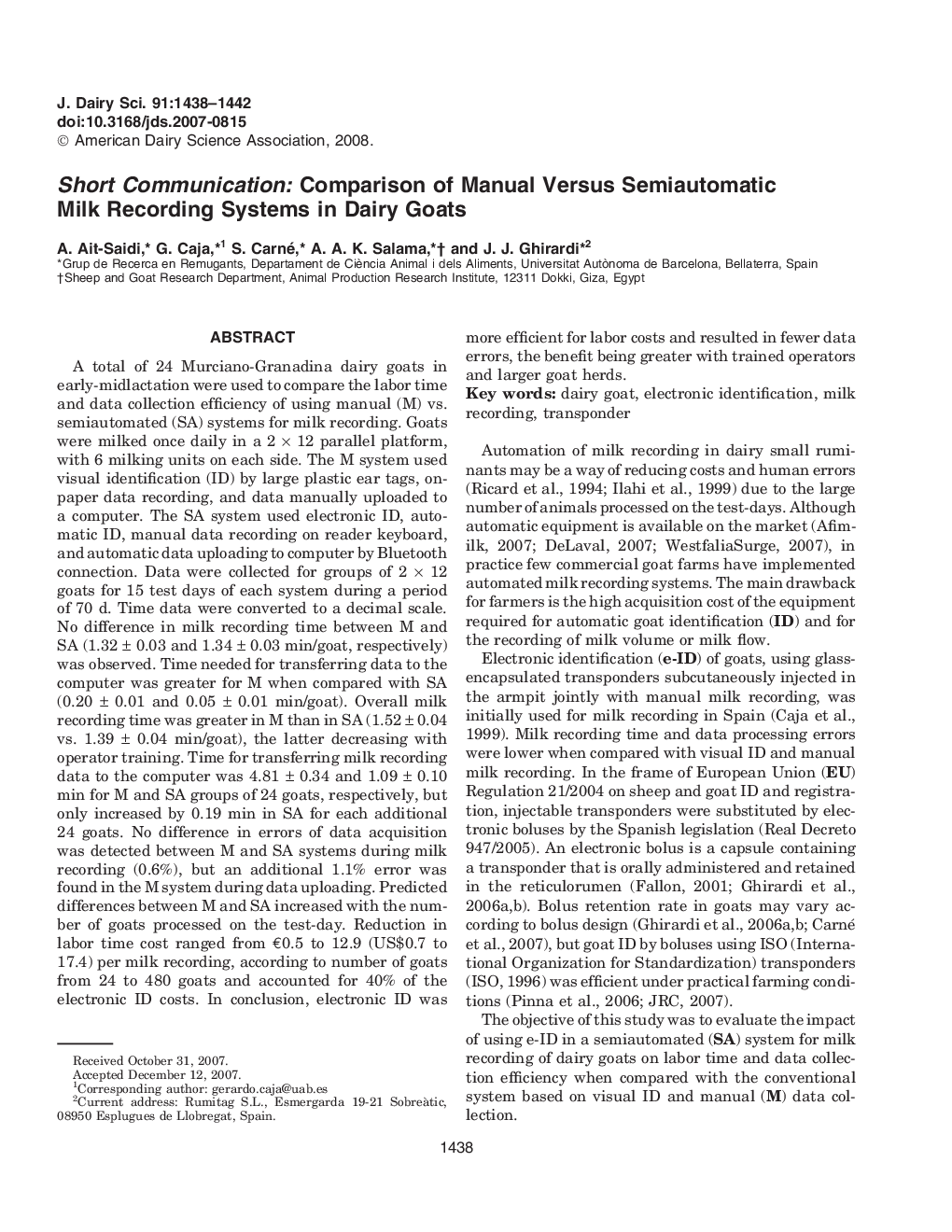| Article ID | Journal | Published Year | Pages | File Type |
|---|---|---|---|---|
| 2440044 | Journal of Dairy Science | 2008 | 5 Pages |
Abstract
A total of 24 Murciano-Granadina dairy goats in early-midlactation were used to compare the labor time and data collection efficiency of using manual (M) vs. semiautomated (SA) systems for milk recording. Goats were milked once daily in a 2 Ã 12 parallel platform, with 6 milking units on each side. The M system used visual identification (ID) by large plastic ear tags, on-paper data recording, and data manually uploaded to a computer. The SA system used electronic ID, automatic ID, manual data recording on reader keyboard, and automatic data uploading to computer by Bluetooth connection. Data were collected for groups of 2 Ã 12 goats for 15 test days of each system during a period of 70 d. Time data were converted to a decimal scale. No difference in milk recording time between M and SA (1.32 ± 0.03 and 1.34 ± 0.03 min/goat, respectively) was observed. Time needed for transferring data to the computer was greater for M when compared with SA (0.20 ± 0.01 and 0.05 ± 0.01 min/goat). Overall milk recording time was greater in M than in SA (1.52 ± 0.04 vs. 1.39 ± 0.04 min/goat), the latter decreasing with operator training. Time for transferring milk recording data to the computer was 4.81 ± 0.34 and 1.09 ± 0.10 min for M and SA groups of 24 goats, respectively, but only increased by 0.19 min in SA for each additional 24 goats. No difference in errors of data acquisition was detected between M and SA systems during milk recording (0.6%), but an additional 1.1% error was found in the M system during data uploading. Predicted differences between M and SA increased with the number of goats processed on the test-day. Reduction in labor time cost ranged from â¬0.5 to 12.9 (US$0.7 to 17.4) per milk recording, according to number of goats from 24 to 480 goats and accounted for 40% of the electronic ID costs. In conclusion, electronic ID was more efficient for labor costs and resulted in fewer data errors, the benefit being greater with trained operators and larger goat herds.
Related Topics
Life Sciences
Agricultural and Biological Sciences
Animal Science and Zoology
Authors
A. Ait-Saidi, G. Caja, S. Carné, A.A.K. Salama, J.J. Ghirardi,
